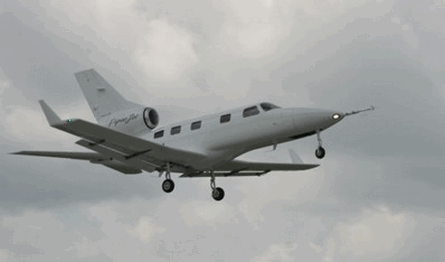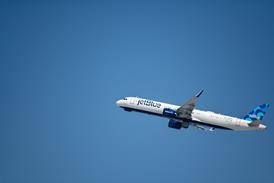Piper Aircraft is working with jet engine manufacturer Williams International to investigate a unique PiperJet thrust augmentation system that could eliminate the need for its much-touted automatic horizontal stabiliser trim system to handle trim changes generated by the aircraft's single high-centreline FJ44-3AP turbofan engine.
According to Piper vice-president of engineering, John Becker, engineers are now experimenting using a Coanda effect device that would channel the jet's exhaust in an appropriate direction to reduce nose-down moment created by adding power and nose-up trim changes when decreasing power.
 |
|---|
© Piper |
The Coanda effect, named after Romanian inventor Henri Coanda (1886-1972), states that a moving stream of air in contact with a curved surface will tend to follow that surface rather than continuing in a straight line. For an engine, the theory goes that the exhaust stream can be manipulated in the vertical direction to create pitch forces that would counteract engine-induced trim changes.
Piper had previously touted its high bandwidth horizontal stabiliser controller, called the Piper automatic trim system, or PATS, as "an engineering coup in this class of airplane". The system was designed to relieve pilots of having to deal with thrust-related pitch changes, reducing workload and increasing passenger comfort.
PATS is somewhat complex, requiring sensors to monitor engine thrust, horizontal stabiliser control authority and flap position to drive an electrically driven actuator that "immediately and automatically moves the horizontal stabiliser to the required position", Piper says.
After initial flight tests, Piper reported that trim changes were less dramatic than expected, and by canting the engine tailpipe down by 6°, the team was able to fly the aircraft without PATS. Canting the tailpipe, however, decreases the net thrust of the engine, which ultimately affects speed and performance.
While Williams would not comment on the development, several US patents issued in the mid-1970s reveal the basic mechanisms involved. The devices include flow attachment surfaces at the aft end of the engine that can be regulated by valves to provide pitch forces when needed and otherwise not diverting the thrust vector.
Source: Flight International























